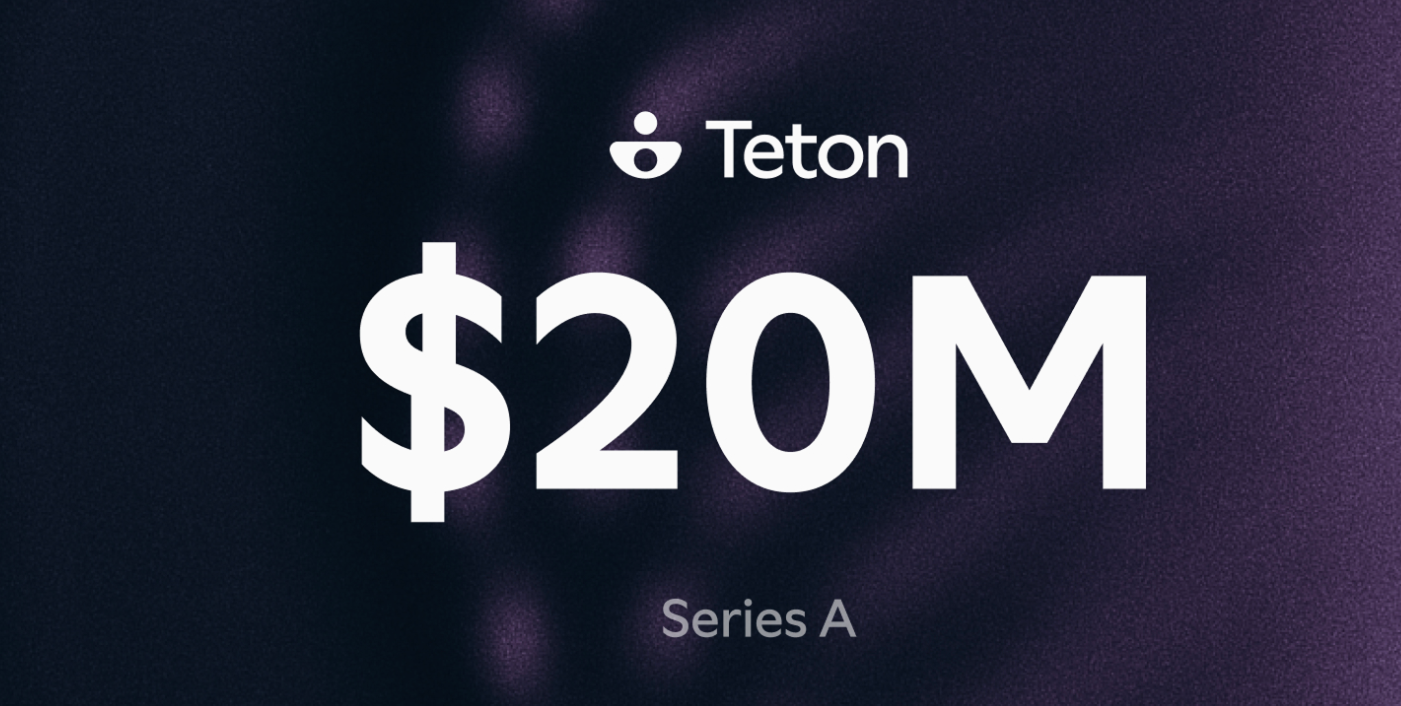Tools & Platforms
The ICO’s role in balancing AI development

The Innovation Platform spoke with Sophia Ignatidou, Group Manager, AI Policy at the Information Commissioner’s Office, about its role in regulating the UK’s AI sector, balancing innovation and economic growth with robust data protection measures.
Technology is evolving rapidly, and as artificial intelligence (AI) becomes more integrated into various aspects of our lives and industries, the role of regulatory bodies like the Information Commissioner’s Office (ICO) becomes crucial.
To explore the ICO’s role in the AI regulatory landscape, Sophia Ignatidou, Group Manager of AI Policy at the ICO, elaborates on the office’s comprehensive approach to managing AI development in the UK, emphasising the opportunities AI presents for economic growth, the inherent risks associated with its deployment, as well as the ethical considerations organisations must address.
What is the role of the Information Commissioner’s Office (ICO) in the UK’s AI landscape, and how does it enforce and raise awareness of AI legislation?
The ICO is the UK’s independent data protection authority and a horizontal regulator, meaning our remit spans both the public and private sectors, including government. We regulate the processing of personal data across the AI value chain: from data collection to model training and deployment. Since personal data underpins most AI systems that interact with people, our work is wide-ranging, covering everything from fraud detection in the public sector to targeted advertising on social media.
Our approach combines proactive engagement and regulatory enforcement. On the engagement side, we work closely with industry through our Enterprise and Innovation teams, and with the public sector via our Public Affairs colleagues. We also provide innovation services to support responsible AI development, with enforcement reserved for serious breaches. We also focus on public awareness, including commissioning research into public attitudes and engaging with civil society.
What opportunities for innovation and economic growth does AI present, and how can these be balanced with robust data protection?
AI offers significant potential to drive efficiency, reduce administrative burdens, and accelerate decision-making by identifying patterns and automating processes. However, these benefits will only be realised if AI addresses real-world problems rather than being a “solution in search of a problem.”
The UK is home to world-class AI talent and continues to attract leading minds. We believe that a multidisciplinary approach, combining technical expertise with insights from social sciences and economics, is essential to ensure AI development reflects the complexity of human experience.
Crucially, we do not see data protection as a barrier to innovation. On the contrary, strong data protection is fundamental to sustainable innovation and economic growth. Just as seatbelts enabled the safe expansion of the automotive industry, robust data protection builds trust and confidence in AI.
What are the potential risks associated with AI, and how does the ICO assess and mitigate them?
AI is not a single technology but an umbrella term for a range of statistical models with varying complexity, accuracy, and data requirements. The risks depend on the context and purpose of deployment.
When we identify a high-risk AI use case, we typically require the organisation, whether developer or deployer, to conduct a Data Protection Impact Assessment (DPIA). This document should outline the risks and the measures in place to mitigate them. The ICO assesses the adequacy of these DPIAs, focusing on the severity and likelihood of harm. Failure to provide an adequate DPIA can lead to regulatory action, as seen in our preliminary enforcement notice against Snap in 2023.
On a similar note, how could emerging technologies like blockchain or federated learning help resolve data protection issues?
Emerging technologies such as federated learning can help address data protection challenges by reducing the amount of personal information processed and improving security. Federated learning allows models to be trained without centralising raw data, which lowers the risk of large-scale breaches and limits exposure of personal information. When combined with other privacy-enhancing technologies, it further mitigates the risk of attackers inferring sensitive data.
Blockchain, when implemented carefully, can strengthen integrity and accountability through tamper-evident records, though it must be designed to avoid unnecessary on-chain disclosure. Our detailed guidance on blockchain will be published soon and can be tracked via the ICO’s technology guidance pipeline.
What ethical concerns are associated with AI, and how should organisations address them? What is the ICO’s strategic approach?
Data protection law embeds ethical principles through its seven core principles: lawfulness, fairness and transparency; purpose limitation; data minimisation; accuracy; storage limitation; security; and accountability. Under the UK GDPR’s “data protection by design and by default” requirement, organisations must integrate these principles into AI systems from the outset.
Our recently announced AI and Biometrics Strategy sets out four priority areas: scrutiny of automated decision-making in government and recruitment, oversight of generative AI foundation model training, regulation of facial recognition technology in law enforcement and development of a statutory code of practice on AI and automated decision-making. This strategy builds on our existing guidance and aims to protect individuals’ rights while providing clarity for innovators.
How can the UK keep pace with emerging AI technologies and their implications for data protection?
The UK government’s AI Opportunities Plan rightly emphasises the need to strengthen regulators’ capacity to supervise AI. Building expertise and resources across the regulatory landscape is essential to keep pace with rapid technological change.
How does the ICO engage internationally on AI regulation, and how influential are other countries’ policies on the UK’s approach?
AI supply chains are global, so international collaboration is vital. We maintain active relationships with counterparts through forums such as the G7, OECD, Global Privacy Assembly, and the European Commission. We closely monitor developments like the EU AI Act, while remaining confident in the UK’s approach of empowering sector regulators rather than creating a single AI regulator.
What is the Data (Use and Access) Act, and what impact will it have on AI policy?
The Data (Use and Access) Act requires the ICO to develop a statutory Code of Practice on AI and automated decision-making. This will build on our existing non-statutory guidance and incorporate recent positions, such as our expectations for generative AI and joint guidance on AI procurement. The code will provide greater clarity on issues such as research provisions and accountability in complex supply chains.
How can the UK position itself as a global leader in AI, and what challenges does the ICO anticipate?
The UK already plays a leading role in global AI regulation discussions. For example, the Digital Regulation Cooperation Forum, bringing together the ICO, Ofcom, CMA and FCA, has been replicated internationally. The ICO was also the first data protection authority to provide clarity on generative AI.
Looking ahead, our main challenges include recruiting and retaining AI specialists, providing regulatory clarity amid rapid technical and legislative change, and ensuring our capacity matches the scale of AI adoption.
Please note, this article will also appear in the 23rd edition of our quarterly publication.
Tools & Platforms
Making Generative AI Work for Everyone in a Factory Setting

In our last discussion, we framed Industrial AI as a comprehensive toolbox filled with specialized instruments. We argued that generative AI, for all its power, is the newest tool in this box, not a replacement for the entire workshop. Now, it’s time to examine that new tool more closely. To truly leverage its potential, we must move beyond the generalized hype and understand its specific strengths and weaknesses in the demanding industrial environment.
From our research and conversations with manufacturers across the globe, two primary high-impact applications for generative AI have clearly emerged. The first is its revolutionary role as a new type of user interface. The second is its unprecedented ability to unlock knowledge from the vast sea of unstructured data that permeates every factory.
The Rise of the “Gen UI”: AI as a Universal Translator
Perhaps the most immediate and profound impact of generative AI in industry is its function as a “generative user interface” or “Gen UI.” For decades, interacting with complex industrial software and data systems required specialized training. Engineers needed to learn specific query languages to pull data from a historian; operators had to navigate complex, menu-driven screens on a human-machine interface (HMI); maintenance staff had to know exactly where to find a specific manual in a labyrinthine document management system.
The Gen UI changes everything. It provides a conversational, natural language layer that sits between the human user and these complex backend systems. It acts as a universal translator, radically lowering the barrier to entry for accessing critical information.
The pro: radical accessibility. With a Gen UI, a process engineer can simply ask, “Show me the pressure and temperature trends for Reactor 4 during the last production run of Product XYZ and flag any anomalies.” A junior maintenance technician can ask their handheld device, “Walk me through the standard lockout-tagout procedure for the main conveyor belt motor.” This democratization of data and knowledge is a paradigm shift, empowering a much broader range of employees to make faster, better-informed decisions.
The con: the persuasive lie. Herein lies the danger. Large language models (LLMs) are designed for fluency and are masters of probability, not truth. They can “hallucinate”—producing an answer that is grammatically perfect, highly confident and completely wrong. In a consumer setting, this is an annoyance. In a factory, a confidently delivered but incorrect answer about a safety procedure, an asset’s operating limit or a chemical mixture could be catastrophic.
The solution: grounding in reality. A Gen UI cannot be deployed in an industrial setting without being strictly “grounded” in the company’s own factual data. Using a technique called retrieval-augmented generation (RAG), the system is architected so the LLM doesn’t invent answers. Instead, it first retrieves verified information from trusted enterprise sources—a data historian, a maintenance database or an approved document library. The LLM’s role is then limited to translating the user’s question, understanding the retrieved facts and formatting the correct answer in natural language. This grounding in a factual data architecture, like an industrial data fabric, is the essential safety rail that makes the Gen UI viable for industry. Even then, LLM is not 100% accurate. Language nuances can be misinterpreted and lead to inaccurate responses in the process.
Taming the Document Tsunami with Unstructured Data
The second game-changing application for GenAI is taming the document tsunami. Our research at ARC shows that for many enterprises, as much as 80% of their data is “unstructured”—locked away in formats that are difficult for traditional analytics to parse. Factories run on this data: PDF operating manuals, P&ID schematics, environmental compliance reports, maintenance work orders and operator logbooks. For decades, the immense knowledge trapped in these documents has been largely inaccessible at scale.
The pro: unlocking trapped knowledge. LLMs are uniquely suited to ingest, index and understand this massive corpus of text. This unlocks decades of invaluable, hard-won operational knowledge. For the first time, organizations can ask complex questions across their entire document library: “Analyze all maintenance comments from the last five years for our compressor fleet and identify the most common precursor to failure.” Or, “Does our current operating procedure for Line 3 comply with the environmental regulations outlined in this 200-page permit?”
The con: the governance nightmare. This power comes with significant risks that must be managed:
Version control: How do you guarantee the AI is referencing the latest approved engineering drawing and not an obsolete draft? The system’s knowledge base must be rigorously managed to prevent outdated information from causing errors or safety incidents.
Intellectual property: Using public LLM APIs could mean sending sensitive, proprietary operational data or product information to a third-party cloud. For most industrial companies, this is a non-starter. The solution requires deploying models within a private, secure cloud or on-premise environment.
Access control: Not every employee should see every document. The GenAI system must be integrated with existing enterprise access controls to ensure that users can only get answers from data they are authorized to view.
Generative AI is not a magic bullet, but it is a profoundly valuable addition to the Industrial AI toolbox. Its true power today is unlocked when we see it for what it is: a revolutionary interface that makes other systems easier to use, and a powerful processor for unlocking the value of unstructured text. When implemented thoughtfully, with the guardrails of grounding and governance, it bridges the gap between complex systems and human ingenuity.
But this raises a new question. Now that we have this powerful new conversational tool, how do we make it work in concert with all the other specialized tools in our box? The answer lies in AI agents, the topic of our final article in this series.
Tools & Platforms
Teton.ai Raises $20M to Reinvent Elderly Care

Insider Brief
- Teton.ai raised $20M in a Series A led by Plural with backing from Bertelsmann Investments, Antler Elevate, Nebular, and PSV Tech, to expand its predictive AI healthcare platform.
- Its proprietary AI and computer vision shift care from reactive to predictive, improving patient outcomes, caregiver efficiency, and operator performance, with reported ARR growth of 13x and partnerships including Nvidia.
- The funding will support U.S. nationwide launch, European expansion, and scaling of its engineering team to advance predictive intelligence in senior care and hospitals.
PRESS RELEASE — Teton.ai, the predictive intelligence company for modern healthcare, announced a $20 million Series A fundraise. The round was led by Plural, which also led Teton’s seed round, with participation from Bertelsmann Investments, Antler Elevate and Nebular and follow-on investment from PSV Tech. The fundraise underscores Teton’s superior technology platform and will accelerate its mission to make amazing care affordable and accessible for all.
Using proprietary AI and computer vision technology, Teton is the only platform that shifts care and the way it is delivered from reactive to predictive. This improves quality of care for patients and residents, job satisfaction for caregivers and business performance for owners and operators. Ultimately, it lowers the cost of and increases access to premium care.
Since seed, Teton has grown ARR 13x and partnered with Nvidia to develop the largest point-of-care dataset in senior care. The company is growing customer numbers 300% year-on-year, delivering concrete outcomes to senior care communities and hospitals across the U.S. and Europe. Teton is in advanced pilots with major U.S. asset owners to bring predictive care to hundreds of thousands more residents in elderly care.
Mikkel Wad Thorsen, CEO of Teton.ai, said: “The economics of senior care and healthcare are broken: costs rise, staff burn out and outcomes suffer. Shifting care from reactive to predictive changes the equation. Emergencies decline, staffing is planned with precision and every intervention creates value. At its core, this is a deflationary technology, making top-tier care more abundantly accessible to more people — extending the length and quality of life for residents while lowering the cost to deliver it. After years embedded inside care environments, we’ve built technology that impacts daily operations, delivering measurable ROI to operators from day one and structural advantages that only grow over time.”
“Teton is at the cutting edge of a much-needed transformation in healthcare,” said Taavet Hinrikus, Partner, Plural. “Within a short time, its technology is already reducing costs and resource needs while achieving the most important thing — improved health outcomes. It’s a complete gamechanger for owners, operators, caregivers, families and residents. The strength of Teton’s team and technology means it’s set to become the market leader as it solves a huge global problem.”
The inpatient, long-term care, skilled nursing facility and in-home care sector in the U.S., Europe and Asia represents a total addressable market of $220 billion. With this fundraise, Teton will build on exceptional demand for its offering by launching nationwide in the U.S., deepening its operations across Europe and supercharging its world-class engineering team to push the boundaries of predictive AI in care.
A New Paradigm for Care: Predictive Intelligence
Healthcare, particularly senior care, faces systemic and urgent challenges. Populations are aging, comorbidities are increasing. Care staff are over-burdened and exiting the industry at higher rates than ever. Costs are already steep and rising. Teton bridges the gap between care needs and care capacity, enabling wider access to premium care for ordinary families and their loved ones.
Teton’s platform delivers four critical capabilities:
Care runs on clarity. Teton’s AI and computer vision technology creates digital twins that continuously observe and understand what’s happening across residents, staff and space — passively and privately. This generates the clarity layer for care: data that has never existed before, which creates full health profiles of residents and granular insights into operations. This is not just more data, it is the right data: real-time, accurate and actionable.
Clarity becomes foresight. Teton tracks key health metrics and brings visibility to everyday patterns and changes, helping teams notice shifts and opportunities to intervene early. Teton forecasts workflows and staffing needs, so leaders and caregivers alike can plan ahead.
Foresight leads to action. Teton delivers the right message to the right person at the right time — preventative intervention, no unnecessary disturbances. Its platform removes administrative burden from caregivers to focus on what matters — providing human-to-human care. Teton gives leaders the capacity to make informed changes to staffing, workflows and billing.
Action drives outcomes. Teton delivers proven results to every part of the care ecosystem:
→ For residents, Teton creates a deep understanding of resident health and behavior that enables tailored care that is safer, more personalized and dignified. For example, Teton reduces falls — the leading cause of injury-related death in adults 65 years and older — by 82%.
→ For families, Teton delivers transparency, trust and, ultimately, more time with loved ones. For example, Teton enables families to monitor relatives’ health and well-being remotely, in real-time.
→ For caregivers, Teton gives time back to listen to, hold hands with — to care for — residents. For example, by reducing their administrative workload and planning their rounds, Teton saves 25% of caregivers’ time — every day. This is time they can spend caring for residents.
→ For operators, Teton optimizes workflows, increases occupancy and staff retention, lowers liability and captures full revenue. For example, against a backdrop of a global shortage of caregivers, Teton drives 28% higher staff retention.
→ For owners, Teton offers portfolio-wide transparency to attract more residents, reduce operational risk and boost returns. For example, Teton delivers 5x ROI as quickly as one year post-installation.
Teton’s platform fits seamlessly into daily routines, with no wearables, video streams or third parties involved at any stage. Its intelligent, unintrusive technology works behind the scenes, delivering actionable insights to frontline staff and leaders in easy-to-use apps.
Contact
Chris Buscombe
+1–646–932–3254
About Teton.ai
Teton.ai is leading a fundamental shift in healthcare — moving care and the way it is delivered from reactive to predictive. Our advanced AI and computer vision technology is custom-built for healthcare settings, providing clarity, delivering foresight, enabling action and driving outcomes. The result is higher-quality care and better-run operations. We are starting with senior care communities and hospitals, and believe our technology can generate significant benefits in any healthcare environment, anywhere in the world. Founded in Denmark and with a presence across the United States and Europe, Teton exists to make amazing care affordable and accessible for all. https://www.teton.ai/
About Plural
Plural is an early-stage investment fund that backs the most ambitious founders on a mission to change the world through technology. Plural launched in June 2022 with the aim to give serious founders in Europe investors with experience to match their ambition. Based in Tallinn, Estonia, and London, UK, Plural’s mission is to have GDP-level impact on Europe, address systemic risks and reduce the opportunity gap worldwide through the companies it backs. https://pluralplatform.com
About Bertelsmann Investments
Bertelsmann Investments (BI) bundles Bertelsmann’s global venture capital activities and the Bertelsmann Next growth unit. The venture capital arm comprises the funds Bertelsmann Asia Investments (BAI), Bertelsmann India Investments (BII), and Bertelsmann Healthcare Investments, as well as selected fund and direct investments in Europe, the U.S., Brazil, Southeast Asia, and Africa, among other regions. The Bertelsmann Next division drives the entrepreneurial development of new growth industries and lines of business, particularly in the fields of mobile ad tech (AppLike), HR tech (EMBRACE), and pharma tech (cormeo). Through Bertelsmann Investments’ fund network and Next activities, approximately €2.0 billion has been invested in around 500 innovative companies and funds to date. Bertelsmann Investments currently holds over 350 active investments worldwide through its start-up and fund network.
About Antler Elevate
Antler is the investor backing the world’s most driven founders, from day zero to greatness. Founded on the belief that people innovating is the key to building a better future, we partner with people across six continents to launch and scale high-potential startups that address meaningful opportunities and challenges. Knowing that exceptional founders can come from anywhere with any background, we have offices in 27 cities, including San Francisco, New York, London, Copenhagen, Berlin, Stockholm, Bangalore, Singapore, Seoul, Tokyo, and Sydney. Our global community backs people from the beginning with co-founder matching, deep business model validation, initial capital, expansion support, and follow-on funding. Antler also provides scale-up capital from Series A onwards to companies through its $285M global fund, Antler Elevate. Fueled by a personal passion that goes beyond traditional investing, we have helped create and invest in more than 1600 startups across a wide range of industries and technologies, with the goal of backing more than 6,000 by 2030.
About Nebular
Nebular is an emerging NYC based venture capital firm investing in technology companies operating at the bleeding edge of what’s possible today. Founded in 2023 the firm has rapidly grown to almost $100m assets under management and has invested in a wide range of companies building the future, from space based data centres to post quantum cryptography security for blockchains.
About PSV Tech
PSV Tech was launched in 2020 as part of the PSV Venture House with a clear mission: to back Nordic founders even before product/market fit. Behind the fund are four General Partners — Helle Uth, Richard Breiter, Alexander Viterbo-Horten, and Christel Piron. PSV Tech invests in founders with extraordinary talent and vision — often as the very first investor. The team supports founders in taking their software startups from early validation to scalable growth. With more than €100m under management, numerous tech investments and six exits from their first fund — including Helloflow and Heyhack — the PSV Tech team has proven its strength in the earliest growth stages and truly knows the craft.
Tools & Platforms
FTC Asks Santa Monica-Based Snap Inc. About AI Chatbots’ Impact on Kids

The Federal Trade Commission is seeking information from Santa Monica-based Snap Inc. and other businesses that provide AI-powered chatbots on how the firms measure, test and monitor potentially negative impacts of the technology on children and teens, the agency announced Thursday.
AI chatbots can effectively mimic human characteristics, emotions and intentions, and generally are designed to communicate like a friend or confidant, which may prompt some users, especially children and teens, to trust and form relationships with chatbots.
The FTC says its inquiry seeks to understand what steps, if any, companies have taken to evaluate the safety of their chatbots when acting as companions, to limit the products’ use by and potential negative effects on children and teens, and to apprise users and parents of the risks associated with the products.
“Protecting kids online is a top priority for the Trump-Vance FTC, and so is fostering innovation in critical sectors of our economy,” FTC Chairman Andrew N. Ferguson said in a statement.
“As AI technologies evolve, it is important to consider the effects chatbots can have on children, while also ensuring that the United States maintains its role as a global leader in this new and exciting industry. The study we’re launching today will help us better understand how AI firms are developing their products and the steps they are taking to protect children.”
The FTC said it is issuing the orders for information using its authority to conduct wide-ranging studies that do not have a specific law enforcement purpose.
Snap Inc. owns the photo-messaging platform Snapchat, among other services. Other companies expected to provide information to the FTC are based in Northern California: Character Technologies, Instagram, Meta Platforms, OpenAI and X.AI Corp.
The agency said it is particularly interested on the impact of the chatbots on children and what actions companies are taking to mitigate potential negative impacts, limit or restrict children’s or teens’ use of the platforms, or comply with the Children’s Online Privacy Protection Act.
The rule imposes certain requirements on operators of websites or online services directed to children under 13 years of age, and on operators of other websites or online services that have knowledge they are collecting personal information online from a child under 13 years of age.
-

 Business2 weeks ago
Business2 weeks agoThe Guardian view on Trump and the Fed: independence is no substitute for accountability | Editorial
-
Tools & Platforms1 month ago
Building Trust in Military AI Starts with Opening the Black Box – War on the Rocks
-

 Ethics & Policy2 months ago
Ethics & Policy2 months agoSDAIA Supports Saudi Arabia’s Leadership in Shaping Global AI Ethics, Policy, and Research – وكالة الأنباء السعودية
-

 Events & Conferences4 months ago
Events & Conferences4 months agoJourney to 1000 models: Scaling Instagram’s recommendation system
-

 Jobs & Careers2 months ago
Jobs & Careers2 months agoMumbai-based Perplexity Alternative Has 60k+ Users Without Funding
-

 Podcasts & Talks2 months ago
Podcasts & Talks2 months agoHappy 4th of July! 🎆 Made with Veo 3 in Gemini
-

 Education2 months ago
Education2 months agoVEX Robotics launches AI-powered classroom robotics system
-

 Education2 months ago
Education2 months agoMacron says UK and France have duty to tackle illegal migration ‘with humanity, solidarity and firmness’ – UK politics live | Politics
-

 Funding & Business2 months ago
Funding & Business2 months agoKayak and Expedia race to build AI travel agents that turn social posts into itineraries
-

 Podcasts & Talks2 months ago
Podcasts & Talks2 months agoOpenAI 🤝 @teamganassi

















